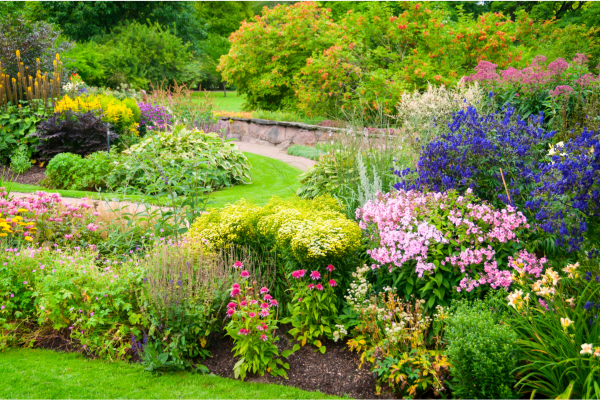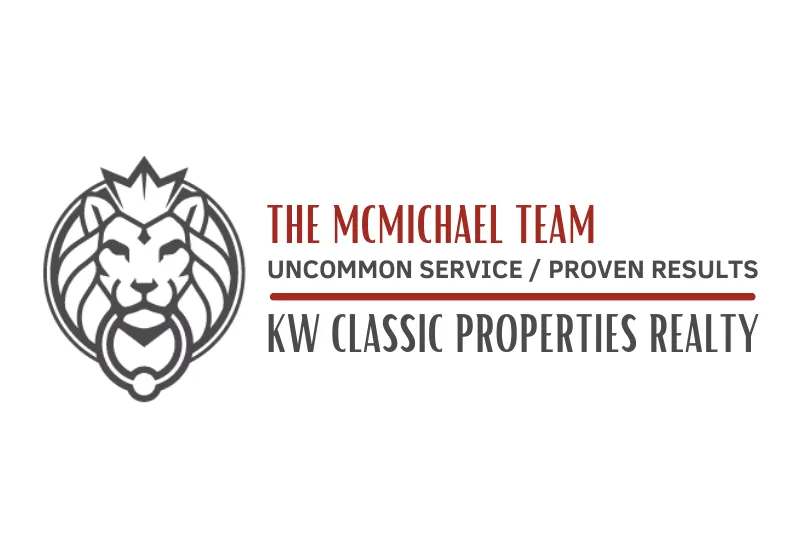Recent Posts

Tips for planning your landscaping and outdoor spaces
“I don't divide architecture, landscape, and gardening; to me they are one.” - Luis Barragan
Introduction:
Planning your Columbus, Ohio landscaping in zone 6b is a thrilling adventure into a unique climate. This temperate region experiences distinct seasonal changes, with cold winters and warm summers. The key to landscaping in this zone lies in thoughtful planning and careful selection of plants.

The key to successful landscaping in Columbus, Ohio lies in careful planning and plant selection.👊
Benefits of Planned Landscaping
A well planned landscape in zone 6b offers numerous advantages. Firstly, it extends your growing season allowing you to enjoy blooms and fresh produce from spring through late fall. Additionally, strategic landscaping can create a sanctuary where you can relax and entertain ultimately enhancing your quality of life.
Assessing Your Outdoor Space in Zone 6b
Before diving into planting, it's important to assess your outdoor space in zone 6b. Take into consideration climate factors such as temperature ranges and frost dates that this region experiences. Evaluate the amount of sun exposure your garden receives, noting both sunny and shaded spots. Also, pay attention to wind patterns and soil conditions which can vary widely across this zone.
Setting Clear Objectives
Establishing clear goals forms the foundation for a landscape project in zone 6b. Ask yourself what you hope to achieve with your landscaping efforts? Are you interested in attracting pollinators to support local ecosystems? Maybe you have a dream of growing your own vegetables or creating a peaceful sanctuary with native plants. These aspirations will serve as your guiding principles when choosing which plants to include and making design decisions for your landscape.
Budgeting for Your Landscape in Columbus, Ohio
When it comes to budgeting for landscaping in zone 6b there are a several factors to consider. Start by determining the size of your project and how much you're willing to invest. Remember to allocate funds for purchasing plants materials, for hardscaping, and any necessary equipment. Given that zone 6b often experiences late spring frosts it would be wise to set aside some budget for protective measures such as frost blankets or row covers.
Selecting Suitable Plants and Features for Zone 6b
In zone 6b, the choice of plants is critical. Look for cold-hardy perennials that can withstand the winter temperatures, like cone flowers (Echinacea) and daylilies (Hemerocallis). For trees, consider species such as maple (Acer rubrum) and white oak (Quercus alba). It's also beneficial to incorporate hardscape features like patios or pathways made from materials that can withstand freezing and thawing cycles.
Creating Functional Zones
Creating functional zones in your garden allows you to optimize the use of your outdoor space. You can divide the garden into areas based on plant types and purposes. Set aside designated spaces for annuals, perennials, vegetables, and areas dedicated to entertainment. This approach maximizes space usage while making maintenance more manageable.
Sustainable Landscaping Practices for Zone 6b
Sustainability is crucial in the climate of zone 6b. It's important to adopt eco-friendly practices like xeriscaping, which conserves water by choosing drought tolerant plants. You can also set up rain barrels to collect precipitation and use it for watering during dry periods. Another beneficial approach is cold frame gardening, which protects plants from frost and extends the growing season.
The Importance of Maintenance
Maintaining your Columbus, Ohio landscape requires care to meet its unique needs. Regular tasks such as mulching help protect roots from temperature changes while pruning promotes healthy growth. As winter approaches, it's advisable to winterize your garden by insulating vulnerable plants and removing debris to prevent mold and pests.
Adding Personal Touches
To personalize your zone 6b landscape consider adding touches that reflect your unique style. This could involve elements like sculptures or frost resistant garden art. Choose plant varieties that resonate with you, whether you prefer wildflowers or the graceful elegance of ornamental grasses.
Lighting Your Zone 6b Outdoor Space
Proper outdoor lighting can enhance the beauty and functionality of your Columbus outdoor space in the evenings. Strategically installing lighting fixtures will illuminate walkways, patios, and key focal points in your garden. Choose energy-efficient options. Think about incorporating solar powered lights to minimize your impact on the environment.
Ensuring Safety in Zone 6b
Safety should always be a priority in a Columbus garden where winter ice and snow can be hazardous. Make sure your pathways are well lit and free from ice during the months. It's also an good idea to use de-icing agents to prevent slips and falls. Additionally, pay attention to storage for your garden tools and equipment to avoid accidents.
Conclusion
To sum it up, planning your Columbus, Ohio landscaping and outdoor spaces, in zone 6b, is an adventure that allows you to embrace the beauty and potential of this unique climate. By following these tips and considering the specific requirements of zone 6b you can create an awe inspiring outdoor sanctuary.
FAQs
1. What are the best cold-hardy plants for zone 6b?
There are a variety of cold-hardy plants that grow in zone 6b, including Asters, bee balm, coneflowers, crocus, daffodils, delphiniums, hibiscus, hostas, irises, lilies, peonies, phlox, salvia, sedum, tulips and yarrow to name a few. Choose native plants and check with your local extension office for specific plants recommended for your area.
2. How can I protect my zone 6b garden from late spring frosts?
Strategies used to safeguard your plants during unpredictable spring weather could include row covers, blankets, insulated cones, cold frames and greenhouses.
3. Are there zone 6b native plants that attract pollinators?
There are a large variety of native plant options that benefit local pollinators and wildlife. Contact your local extension office for specific varieties.
4. What are the advantages of cold frame gardening in zone 6b?
Cold frames allow you to start planting earlier in the spring and continue gardening later into the fall. They create a microclimate that traps heat, protecting plants from frost, wind, and cold temperatures, which is especially beneficial in Zone 6b where the growing season may be shortened.
5. How can I maintain an eco-friendly garden in zone 6b's cold winters?
To maintain an eco-friendly garden in Zone 6b's cold winters, follow these steps:
Mulch: Spread about two to three inches of mulch in a wide, even layer around your outdoor plants. Mulching helps insulate the soil, preventing it from freezing too deeply and protecting the plant roots from extreme cold.
Clear Dead Plants: Before winter, clear and compost dead plants from your garden to provide a clean slate for the next season.
Use Cloches: Cloches are great for protecting individual plants. You can use simple items like milk cartons turned upside down or clear plastic bins to create mini-greenhouses that shield plants from the cold, wind, and frost.
Choose Cold-Tolerant Vegetables: Opt for cold-tolerant vegetables like lettuce, Swiss chard, arugula, radishes, beets, and collards that can handle light frosts and continue to grow in winter.
Compost and Mulch: Add compost and mulch to your garden in the fall to improve soil health and provide insulation for plant roots during winter.
Recent Posts

Tips for planning your landscaping and outdoor spaces
“I don't divide architecture, landscape, and gardening; to me they are one.” - Luis Barragan
Introduction:
Planning your Columbus, Ohio landscaping in zone 6b is a thrilling adventure into a unique climate. This temperate region experiences distinct seasonal changes, with cold winters and warm summers. The key to landscaping in this zone lies in thoughtful planning and careful selection of plants.

The key to successful landscaping in Columbus, Ohio lies in careful planning and plant selection.👊
Benefits of Planned Landscaping
A well planned landscape in zone 6b offers numerous advantages. Firstly, it extends your growing season allowing you to enjoy blooms and fresh produce from spring through late fall. Additionally, strategic landscaping can create a sanctuary where you can relax and entertain ultimately enhancing your quality of life.
Assessing Your Outdoor Space in Zone 6b
Before diving into planting, it's important to assess your outdoor space in zone 6b. Take into consideration climate factors such as temperature ranges and frost dates that this region experiences. Evaluate the amount of sun exposure your garden receives, noting both sunny and shaded spots. Also, pay attention to wind patterns and soil conditions which can vary widely across this zone.
Setting Clear Objectives
Establishing clear goals forms the foundation for a landscape project in zone 6b. Ask yourself what you hope to achieve with your landscaping efforts? Are you interested in attracting pollinators to support local ecosystems? Maybe you have a dream of growing your own vegetables or creating a peaceful sanctuary with native plants. These aspirations will serve as your guiding principles when choosing which plants to include and making design decisions for your landscape.
Budgeting for Your Landscape in Columbus, Ohio
When it comes to budgeting for landscaping in zone 6b there are a several factors to consider. Start by determining the size of your project and how much you're willing to invest. Remember to allocate funds for purchasing plants materials, for hardscaping, and any necessary equipment. Given that zone 6b often experiences late spring frosts it would be wise to set aside some budget for protective measures such as frost blankets or row covers.
Selecting Suitable Plants and Features for Zone 6b
In zone 6b, the choice of plants is critical. Look for cold-hardy perennials that can withstand the winter temperatures, like cone flowers (Echinacea) and daylilies (Hemerocallis). For trees, consider species such as maple (Acer rubrum) and white oak (Quercus alba). It's also beneficial to incorporate hardscape features like patios or pathways made from materials that can withstand freezing and thawing cycles.
Creating Functional Zones
Creating functional zones in your garden allows you to optimize the use of your outdoor space. You can divide the garden into areas based on plant types and purposes. Set aside designated spaces for annuals, perennials, vegetables, and areas dedicated to entertainment. This approach maximizes space usage while making maintenance more manageable.
Sustainable Landscaping Practices for Zone 6b
Sustainability is crucial in the climate of zone 6b. It's important to adopt eco-friendly practices like xeriscaping, which conserves water by choosing drought tolerant plants. You can also set up rain barrels to collect precipitation and use it for watering during dry periods. Another beneficial approach is cold frame gardening, which protects plants from frost and extends the growing season.
The Importance of Maintenance
Maintaining your Columbus, Ohio landscape requires care to meet its unique needs. Regular tasks such as mulching help protect roots from temperature changes while pruning promotes healthy growth. As winter approaches, it's advisable to winterize your garden by insulating vulnerable plants and removing debris to prevent mold and pests.
Adding Personal Touches
To personalize your zone 6b landscape consider adding touches that reflect your unique style. This could involve elements like sculptures or frost resistant garden art. Choose plant varieties that resonate with you, whether you prefer wildflowers or the graceful elegance of ornamental grasses.
Lighting Your Zone 6b Outdoor Space
Proper outdoor lighting can enhance the beauty and functionality of your Columbus outdoor space in the evenings. Strategically installing lighting fixtures will illuminate walkways, patios, and key focal points in your garden. Choose energy-efficient options. Think about incorporating solar powered lights to minimize your impact on the environment.
Ensuring Safety in Zone 6b
Safety should always be a priority in a Columbus garden where winter ice and snow can be hazardous. Make sure your pathways are well lit and free from ice during the months. It's also an good idea to use de-icing agents to prevent slips and falls. Additionally, pay attention to storage for your garden tools and equipment to avoid accidents.
Conclusion
To sum it up, planning your Columbus, Ohio landscaping and outdoor spaces, in zone 6b, is an adventure that allows you to embrace the beauty and potential of this unique climate. By following these tips and considering the specific requirements of zone 6b you can create an awe inspiring outdoor sanctuary.
FAQs
1. What are the best cold-hardy plants for zone 6b?
There are a variety of cold-hardy plants that grow in zone 6b, including Asters, bee balm, coneflowers, crocus, daffodils, delphiniums, hibiscus, hostas, irises, lilies, peonies, phlox, salvia, sedum, tulips and yarrow to name a few. Choose native plants and check with your local extension office for specific plants recommended for your area.
2. How can I protect my zone 6b garden from late spring frosts?
Strategies used to safeguard your plants during unpredictable spring weather could include row covers, blankets, insulated cones, cold frames and greenhouses.
3. Are there zone 6b native plants that attract pollinators?
There are a large variety of native plant options that benefit local pollinators and wildlife. Contact your local extension office for specific varieties.
4. What are the advantages of cold frame gardening in zone 6b?
Cold frames allow you to start planting earlier in the spring and continue gardening later into the fall. They create a microclimate that traps heat, protecting plants from frost, wind, and cold temperatures, which is especially beneficial in Zone 6b where the growing season may be shortened.
5. How can I maintain an eco-friendly garden in zone 6b's cold winters?
To maintain an eco-friendly garden in Zone 6b's cold winters, follow these steps:
Mulch: Spread about two to three inches of mulch in a wide, even layer around your outdoor plants. Mulching helps insulate the soil, preventing it from freezing too deeply and protecting the plant roots from extreme cold.
Clear Dead Plants: Before winter, clear and compost dead plants from your garden to provide a clean slate for the next season.
Use Cloches: Cloches are great for protecting individual plants. You can use simple items like milk cartons turned upside down or clear plastic bins to create mini-greenhouses that shield plants from the cold, wind, and frost.
Choose Cold-Tolerant Vegetables: Opt for cold-tolerant vegetables like lettuce, Swiss chard, arugula, radishes, beets, and collards that can handle light frosts and continue to grow in winter.
Compost and Mulch: Add compost and mulch to your garden in the fall to improve soil health and provide insulation for plant roots during winter.

1349 W. Lane Ave, Suite 1125, Columbus, OH, 43221
(614) 769-7766
(614) 768-6531
www.livingincolumbus.com





